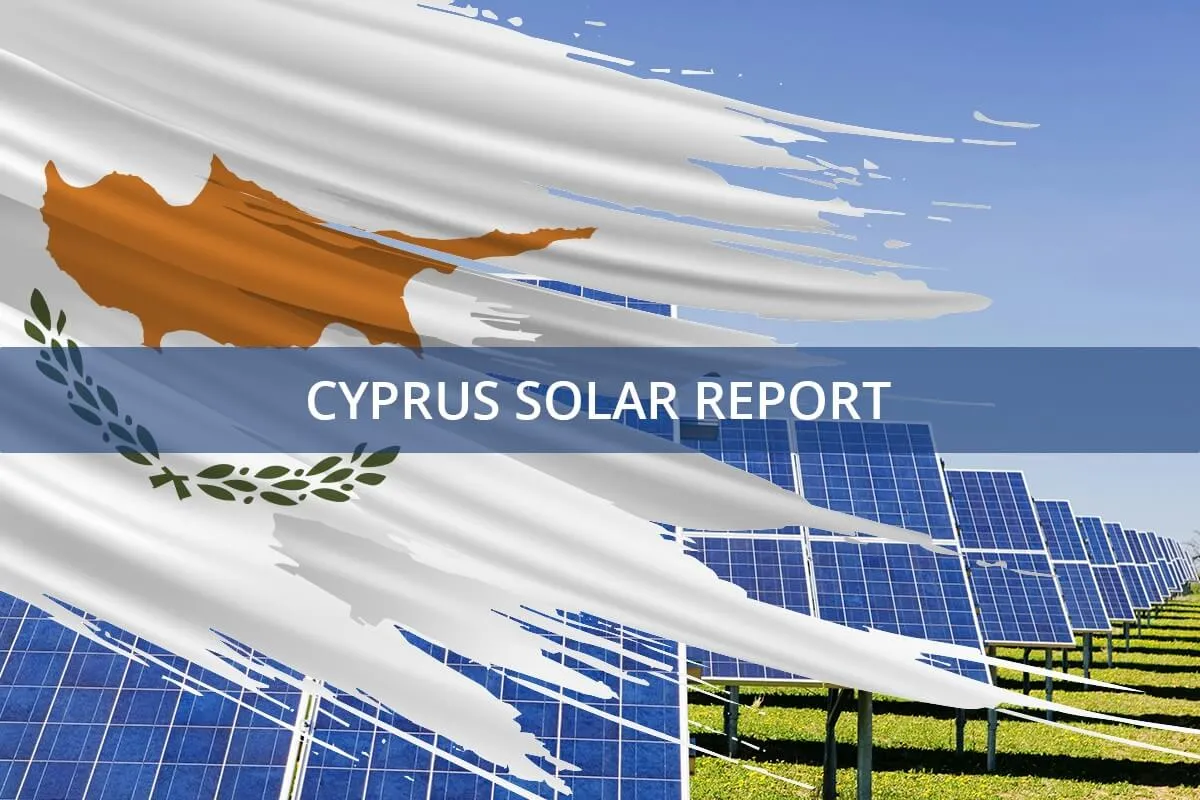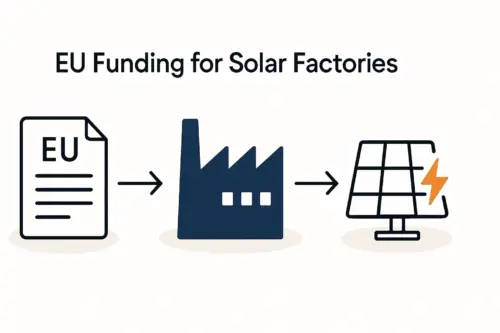Establishing a solar module factory in Cyprus is a compelling prospect. The island offers a strategic location at the crossroads of Europe, the Middle East, and Africa, along with membership in the European Union. Yet its greatest geographical asset—being an island—also presents its most significant operational challenge: every raw material, from solar cells to aluminum frames, must cross the sea.
For entrepreneurs venturing into solar manufacturing, overlooking the complexities of island-based logistics can be a costly mistake. A successful operation in Cyprus is not just about production technology; it is fundamentally about mastering the supply chain. This guide provides a detailed analysis of the logistical challenges and strategic solutions for sourcing and managing raw materials for a solar factory on the island.
The Unique Logistical Landscape of an Island Nation
Unlike a mainland European factory with access to road and rail, a Cypriot facility is entirely dependent on sea and air freight. This reliance on maritime shipping fundamentally alters planning priorities. The primary entry points for goods are the deep-water ports of Limassol and Larnaca—the lifelines for the entire manufacturing operation.
This dependency transforms concepts like lead time, buffer stock, and customs clearance from routine operational tasks into strategic cornerstones of the business plan. A delay of a few days for a truck arriving at a factory in Germany might be a minor inconvenience. The same delay for a container ship destined for Limassol could halt production for weeks.

Sourcing Strategy: Balancing Cost, Quality, and Lead Time
The first major decision for a new factory owner is where to source raw materials. The choice typically comes down to suppliers in the European Union or Asia, each with a distinct set of advantages and disadvantages.
Sourcing from European Union Suppliers
Sourcing from countries like Germany, Spain, or Italy offers significant logistical benefits.
Advantages:
- Shorter Lead Times: Sea freight from a port like Genoa, Italy, to Limassol can take as little as 7–10 days. This allows for more flexible production planning.
- Simplified Customs: As Cyprus is an EU member state, goods move freely within the single market, eliminating complex customs procedures and import duties.
- Consistent Quality: European suppliers often adhere to stringent quality standards for critical components like EVA film and backsheets, reducing the risk of material defects.
Disadvantages:
- Higher Material Costs: The primary drawback is cost. On a like-for-like basis, high-quality European raw materials for solar panels can be 10–20% more expensive than their Asian counterparts.
Sourcing from Asian Suppliers
Manufacturers in China and Southeast Asia are the largest global producers of solar components, offering significant cost advantages.
Advantages:
- Lower Costs: The cost savings on bulk materials such as solar cells, tempered glass, and aluminum frames can be substantial, directly improving the factory’s cost of goods sold.
Disadvantages:
- Extended Lead Times: A container ship from Shanghai to Limassol typically has a transit time of 30–40 days. This extended period ties up capital and requires planning months in advance.
- Logistical Complexity: The process involves navigating international customs, potential transshipment delays, and a greater risk of port congestion.
- Quality Assurance: Rigorous pre-shipment inspections become non-negotiable to ensure materials meet the required technical specifications upon arrival. As experience from J.v.G. turnkey projects shows, initial cost savings from Asia can be quickly eroded by unforeseen delays or quality issues without a robust inspection process in place.
A Hybrid Sourcing Model: The Recommended Approach
For most new factories in Cyprus, a hybrid model offers the optimal balance.
-
Source Bulk, Non-Urgent Materials from Asia: Plan well in advance to import aluminum frames, glass, and junction boxes from cost-effective Asian suppliers.
-
Source Critical, Quality-Sensitive Materials from the EU: Procure solar cells and encapsulants (EVA/POE) from European suppliers to ensure high quality and shorter, more reliable delivery times.
This strategy mitigates risk while managing costs, creating a more resilient supply chain.
Managing Sea Freight and Port Logistics
Understanding the mechanics of sea freight is crucial. Most materials will be shipped in 20-foot or 40-foot containers under Full Container Load (FCL) terms. The journey involves several stages: inland transport from the supplier to the port of origin, ocean transit, customs clearance in Limassol or Larnaca, and finally, road transport to the factory.
Entrepreneurs must also account for costs beyond the base freight rate. Port fees, customs brokerage, and potential demurrage charges (fees for failing to collect a container on time) can add up. A 40-foot container from Shanghai to Limassol might have a base freight cost of €3,000–€5,000, subject to market volatility, but the total landed cost can be significantly higher once all ancillary fees are included.

Beyond managing costs, ensuring a smooth passage through customs is paramount. While Limassol is a modern and efficient port, proper documentation is essential for customs clearance, especially for goods originating outside the EU. Any errors can lead to costly delays.
Inventory Management: The Island Imperative
For an island-based factory, inventory is insurance. While a mainland factory might operate on a lean ‘just-in-time’ model, a Cypriot facility must adopt a ‘just-in-case’ strategy.
-
Safety Stock: This is the additional inventory held to protect against supply chain disruptions. If a critical shipment of solar cells from Asia is delayed by three weeks, the factory needs enough safety stock to continue its solar module production line without interruption. For a Cypriot factory, holding 4–6 weeks of critical raw materials is a prudent measure, whereas 2–3 weeks might suffice for a mainland counterpart.
-
Economic Order Quantity (EOQ): This principle involves balancing the cost of placing orders against the cost of holding inventory. Given the high fixed costs of international shipping, it is often more economical to place larger, less frequent orders. While this increases warehousing costs, it is usually preferable to the far greater cost of a full production shutdown.
This disciplined approach requires a significant upfront investment in working capital but provides the operational stability needed to succeed in an island environment.
Frequently Asked Questions (FAQ)
How much warehouse space is needed for a 50 MW factory in Cyprus?
A 50 MW per year factory typically requires 1,500 to 2,500 square meters of dedicated warehouse space. This accommodates safety stock for 4–6 weeks of production and allows for the segregation of different materials like glass, frames, and solar cells.
Is air freight a viable option for solar raw materials?
Due to the high weight and volume of most solar materials (especially glass and aluminum), air freight is prohibitively expensive for routine shipments. It should be reserved only for emergencies, such as delivering a small batch of critical spare parts or a specialty chemical to prevent a production stoppage.
What are the main customs challenges when importing from outside the EU to Cyprus?
The primary challenges include ensuring the commercial invoice, packing list, and bill of lading are perfectly accurate and consistent. Importers must also correctly classify goods with the right HS codes to ensure the correct duties and taxes are applied. Working with an experienced local customs broker is highly recommended.
How does currency fluctuation affect sourcing from different regions?
When sourcing from the EU, transactions are in Euros, eliminating currency risk for a Cyprus-based company. Sourcing from Asia (typically priced in USD) or other regions, however, introduces foreign exchange risk. Businesses should consider hedging strategies to protect against adverse currency movements between the time an order is placed and when payment is due.
Conclusion: Turning Logistical Challenges into a Competitive Advantage
The logistical hurdles of operating a solar factory in Cyprus are significant, but they are not insurmountable. With careful planning, they can be transformed into a source of competitive strength.
A resilient operation—one that can withstand the inevitable disruptions of global supply chains—is built on a well-designed hybrid sourcing strategy, a deep understanding of sea freight mechanics, and a disciplined approach to inventory management. By mastering logistics, an entrepreneur in Cyprus can leverage the island’s strategic advantages to build a successful and sustainable solar manufacturing business.
Planning a supply chain of this complexity requires detailed financial modeling and process design. To navigate these critical decisions from the earliest stages, explore the structured guidance available through e-learning courses and consulting at pvknowhow.com.







